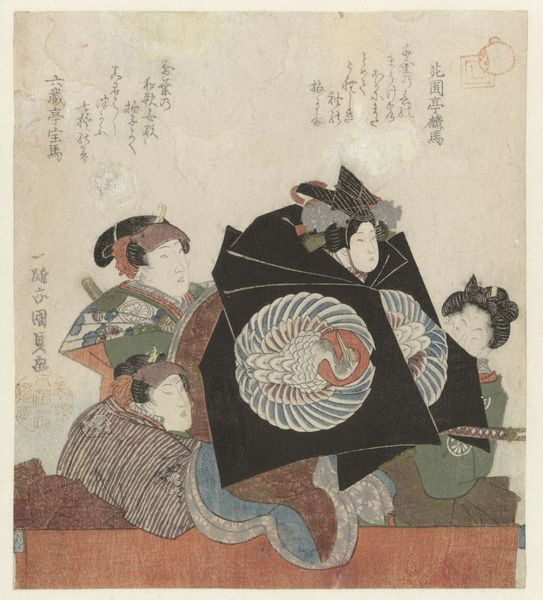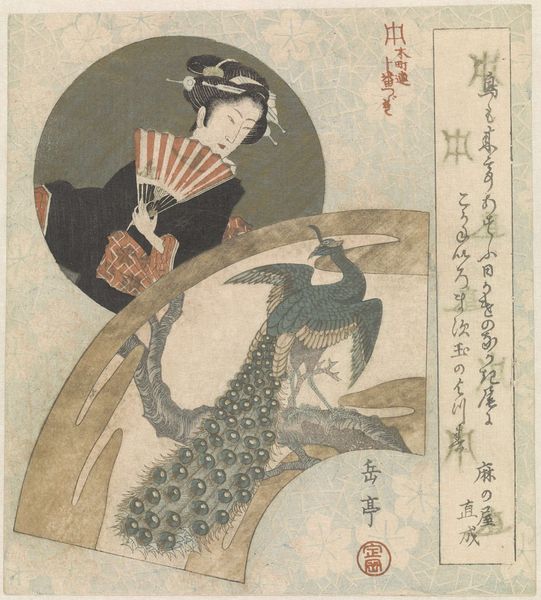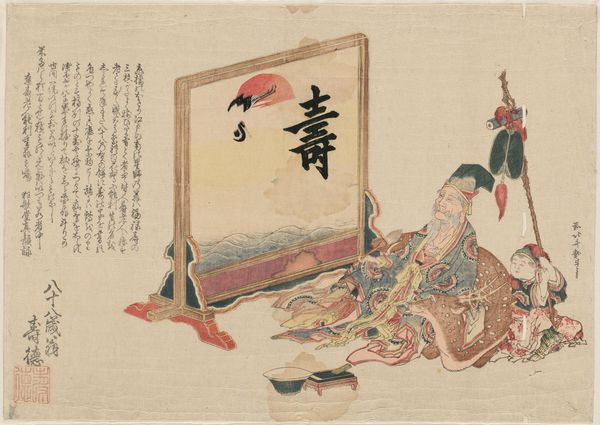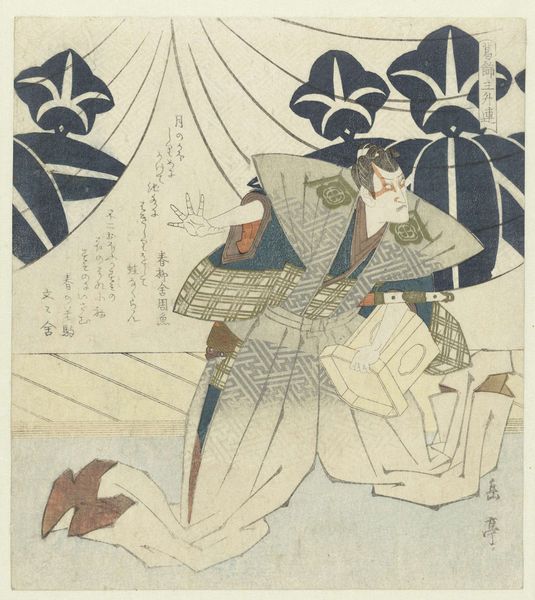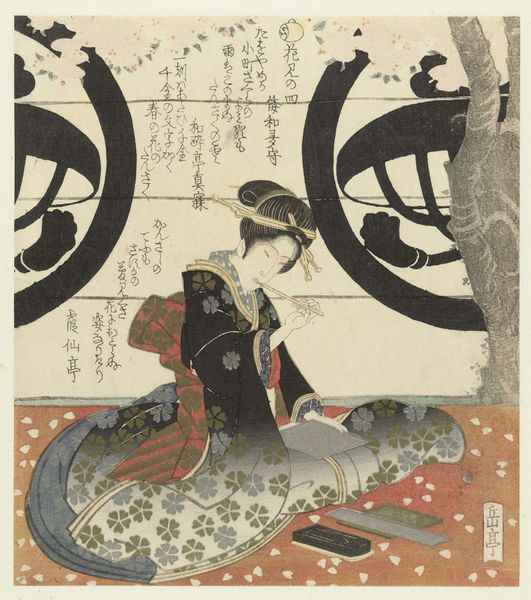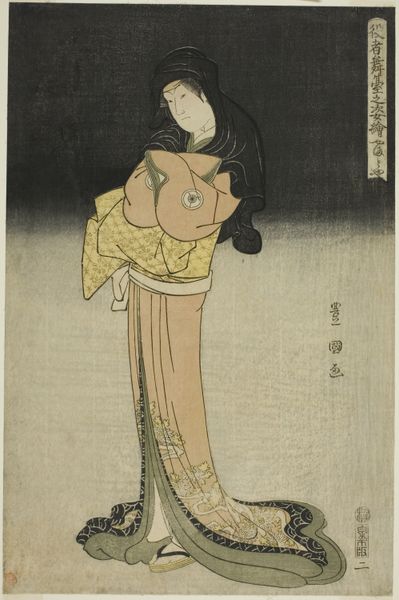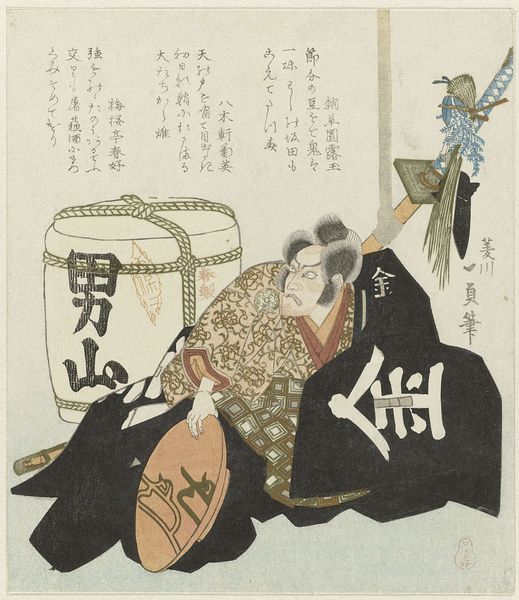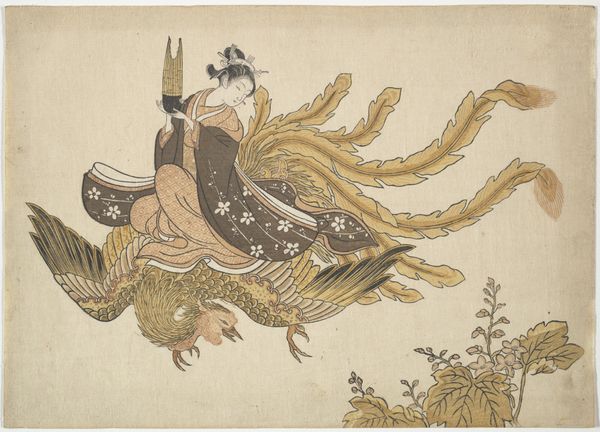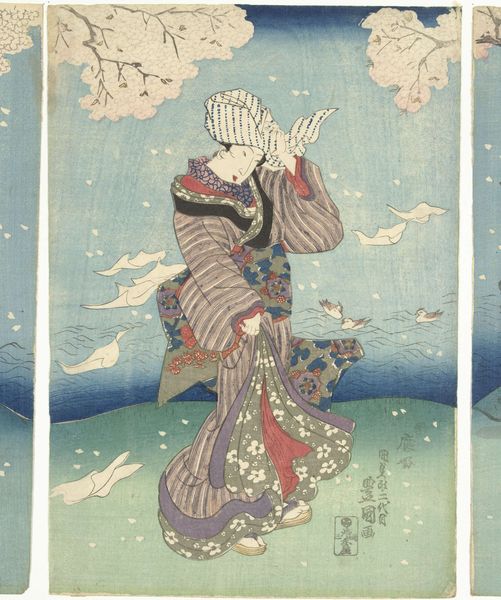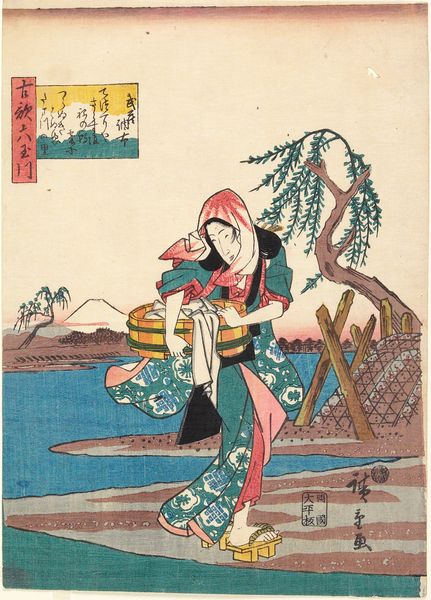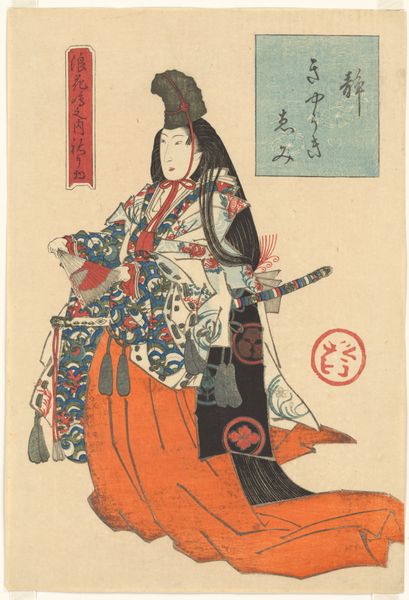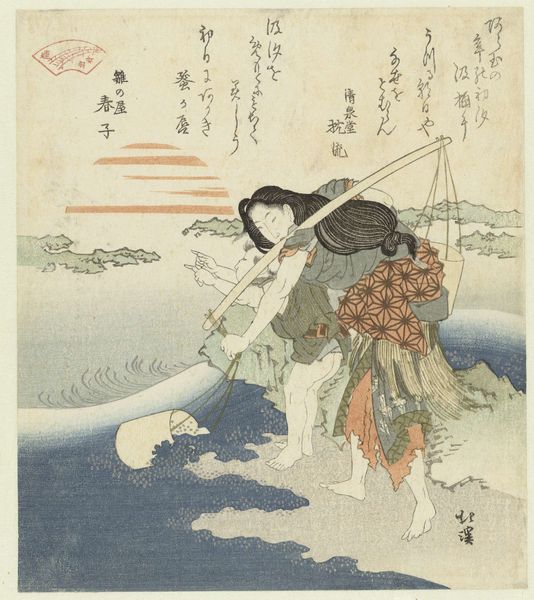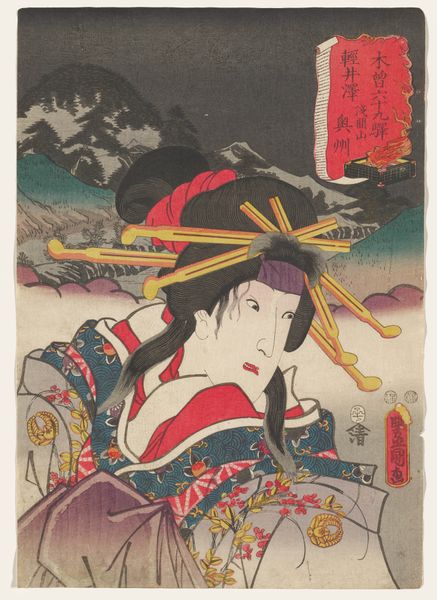
print, woodblock-print
# print
#
asian-art
#
landscape
#
ukiyo-e
#
figuration
#
woodblock-print
Dimensions: height 210 mm, width 251 mm
Copyright: Rijks Museum: Open Domain
Curator: Looking at this artwork, titled "De vossenval", or "The Fox Trap," made by Utagawa Hiroshige sometime between 1843 and 1845, what's your immediate take? Editor: There's a strong theatricality, a sense of anticipation… I’m immediately drawn to that central figure, the fox spirit dressed as a travelling pilgrim, caught between the darkening sky and whatever that decorative arrangement of fans might signify. Curator: Hiroshige made this print using the Ukiyo-e woodblock technique, very popular during the Edo period. I think what's compelling here is to look at it in terms of the cultural production; prints like these weren't high art initially, but affordable commodities. They democratized image-making. Editor: Yes, but let’s also unpack those images. The fox, the kitsune, has deep roots in Japanese folklore – often seen as tricksters, shapeshifters, with connections to Inari, the rice god. Look how Hiroshige plays with the symbolic weight – the fox transformed into human form to deceive others. And then we have that hanging trap-like object; what purpose does it have beyond a visual lure? Curator: Considering that the final product is just one impression on a piece of paper; one block for each colour that creates an accessible form of narrative. How were the colors produced? What meaning does its affordability bring to understanding its place in visual culture? How the system of production gives the illusion of high art? That is the cultural meaning, its democratized essence. Editor: Well, while acknowledging its mode of creation, let's not flatten the reading too much. Note the meticulous detailing on the pilgrim's costume, on the furrows that form its shape. The choice of symbols cannot be ignored. I'm really drawn to the contrasting textures; even that seemingly simple backdrop of blue creates such atmospheric depth. These resonate on more than a purely material level. It does invoke deeper psychological associations. Curator: Fair point, I do agree about the symbolic element of each piece working to create a narrative, it’s about questioning how its materiality makes that more approachable. Something once believed unreachable is finally on your grasp, both literally and figuratively. Editor: Agreed, thinking of its combined historical, cultural and material components certainly give me a far greater appreciation for what is captured in its plane.
Comments
No comments
Be the first to comment and join the conversation on the ultimate creative platform.
